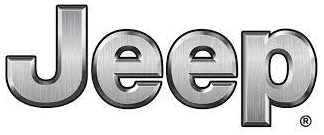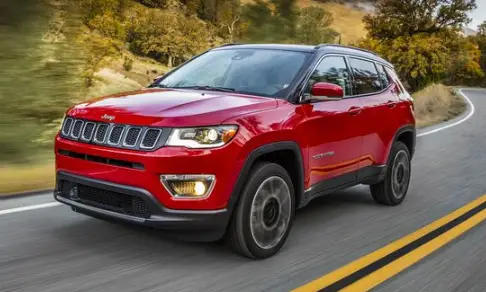 2021 Jeep Compass Engine Oil and Fluids
2021 Jeep Compass Engine Oil and Fluids
The 2021 Jeep Compass is like a complicated mechanical melody, and the engine oil and other important fluids are at the center of it. These important parts make sure that the vehicle’s heartbeat stays steady and that blood flows through its vital systems to make sure it works well and lasts a long time. As a lubricant and a temperature regulator, engine oil keeps the complex parts of the motor running smoothly. Other important fluids, such as coolant and transmission fluid, help keep the temperature, power delivery, and general function of the vehicle in balance. Together, this mix of oils and fluids becomes the conductor of the Compass’s dynamic power, making sure that every trip is reliable, efficient, and a driving experience that feels like the art of precision engineering.
ENGINE COMPARTMENT
2.4L ENGINE
- Engine Air Cleaner Filter
- Engine Oil Fill
- Brake Fluid Reservoir Cap
- Battery
- Power Distribution Center (Fuses)
- Washer Fluid Reservoir Cap
- Secondary Battery
- Coolant Pressure Bottle Cap
- Engine Oil Dipstick
CHECKING OIL LEVEL
To ensure proper engine lubrication, the engine oil must be maintained at the correct level. Check the oil level at regular intervals, such as every fuel stop. The best time to check the engine oil level is about five minutes after a fully warmed-up engine is shut off. Checking the oil while the vehicle is on level ground will improve the accuracy of the oil level readings.
There are four possible dipstick types:
- Crosshatched zone.
- Crosshatched zone marked SAFE.
- Crosshatched zone marked with MIN at the low end of the range and MAX at the high end of the range.
- Crosshatched zone marked with dimples at the MIN and the MAX ends of the range.
NOTE: Always maintain the oil level within the crosshatch markings on the dipstick. Adding 1 quart (1 liter) of oil when the reading is at the low end of the dipstick range will raise the oil level to the high end of the range marking.
CAUTION! Overfilling or underfilling the crankcase will cause aeration or loss of oil pressure. This could damage your engine.
ADDING WASHER FLUID
The fluid reservoir is located in the front of the engine compartment. Be sure to check the fluid level in the reservoir at regular intervals. Fill the reservoir with windshield washer solvent (not radiator antifreeze) and operate the system for a few seconds to flush out the residual washer fluid. When refilling the washer fluid reservoir, take some washer fluid, apply it to a cloth or towel, and wipe clean the wiper blades; this will help blade performance. To prevent freeze-up of your windshield washer system in cold weather, select a solution or mixture that meets or exceeds the temperature range of your climate. This rating information can be found on most washer fluid containers.
WARNING!
Commercially available windshield washer solvents are flammable. They could ignite and burn you. Care must be exercised when filling or working around the washer solution.
MAINTENANCE-FREE BATTERY
Your vehicle is equipped with a maintenance-free battery. You will never have to add water, and periodic maintenance is not required.
WARNING!
- Battery fluid is a corrosive acid solution and can burn or even blind you. Do not allow battery fluid to contact your eyes, skin, or clothing. Do not lean over a battery when attaching clamps.
- If acid splashes in eyes or on skin, flush the area immediately with large amounts of water.
- Battery gas is flammable and explosive. Keep flame or sparks away from the battery.
- Do not use a booster battery or any other booster source with an output greater than 12 Volts. Do not allow cable clamps to touch each other.
- Battery posts, terminals, and related accessories contain lead and lead compounds. Wash hands after handling.
CAUTION!
- It is essential when replacing the cables on the battery that the positive cable is attached to the positive post and the negative cable is attached to the negative post. Battery posts are marked positive (+) and negative (-) and are identified on the battery case. Cable clamps should be tight on the terminal posts and free of corrosion.
- If a “fast charger” is used while the battery is in the vehicle, disconnect both vehicle battery cables before connecting the charger to the battery. Do not use a “fast charger” to provide a starting voltage.
PRESSURE WASHING
Cleaning the engine compartment with a high-pressure washer is not recommended.
CAUTION!
Precautions have been taken to safeguard all parts and connections however, the pressures generated by these machines are such that complete protection against water ingress cannot be guaranteed.
FAQ
A: Engine oil and fluids are essential liquids that lubricate, cool, and maintain the proper functioning of various vehicle systems.
A: It’s recommended to check the engine oil level at least once a month and before long trips.
A: The recommended engine oil type can vary based on the engine option. Consult the owner’s manual for the correct specifications.
A: The recommended oil change interval can vary based on driving conditions and oil type. Check the owner’s manual for guidance.
A: Yes, you can switch to synthetic oil as long as it meets the recommended specifications in the owner’s manual.
A: The recommended oil filter can vary based on the engine option. Refer to the owner’s manual for the correct part number.
A: In most cases, engine oil additives are not required and may not be recommended. Consult the owner’s manual for guidance.
A: Locate the coolant reservoir under the hood and check the level against the markings on the reservoir.
A: The recommended coolant type can vary based on the engine option. Refer to the owner’s manual for the correct specifications.
A: The recommended coolant flush interval can vary. Consult the owner’s manual for the manufacturer’s guidelines.
A: It’s generally not recommended to mix different brands of coolant. Stick to the same type and brand for best results.
A: Some models might have a sealed transmission system with no dipstick. Refer to the owner’s manual for guidance.
A: While some fuel additives claim to improve efficiency, it’s essential to use products that are compatible with your vehicle and follow manufacturer recommendations.
A: Adding windshield washer fluid is usually straightforward. Locate the reservoir and pour the fluid in according to the owner’s manual.
A: Used oil and fluids must be disposed of properly at authorized recycling centers or service facilities. Avoid pouring them down drains or in the environment.
Useful Link
View Full PDF: 2021 Jeep Compass |Auto User Guide
2021 Jeep Compass Seat Belts Setup Guide

